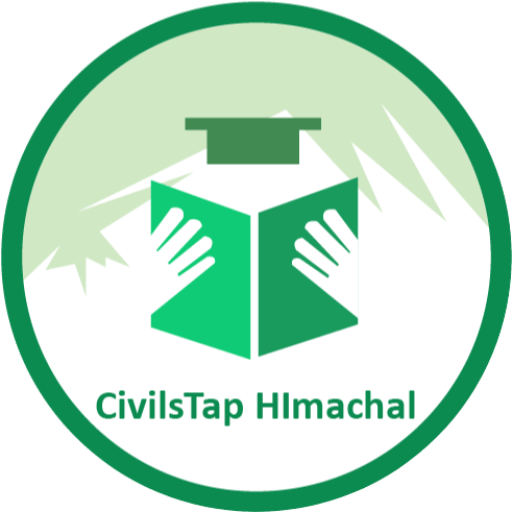October 16, 2025
- Phone :+917814622609
- Email :[email protected]
- Student Dashboard
General Studies Paper-3
Context: India has achieved a record of over 145 million tonnes of cargo movement on inland waterways in 2024-25.
About
- The number of National Waterways increased from 5 to 111, with the operational length growing from 2,716 km (2014–15) to 4,894 km (2023–24).
- Massive infrastructure development includes Multi-Modal Terminals (MMTs), Inter-Modal Terminals (IMTs), community jetties, floating terminals, and green tech like Hybrid Electric and Hydrogen Vessels.
- Future Prospects: India aims to increase IWT modal share from 2% to 5%, and raise traffic to 200+ MMT by 2030 and 500+ MMT by 2047 under Maritime Amrit Kaal Vision.
Inland Waterways
- Inland waterways refer to navigable rivers, canals, backwaters, and creeks used for transportation of goods and passengers within a country.
- India has ~14,500 km of navigable waterways, but their usage is limited. 111 waterways have been declared National Waterways (NWs) under the National Waterways Act, 2016.
- Importance of Inland Waterways
- Economic Benefits: Lower transportation costs compared to road and rail.
- Fuel Efficiency: Uses 30% less fuel than road transport and 50% less than rail.
- Environmental Sustainability: Reduces carbon emissions and congestion on roads.
- Connectivity: Supports hinterland trade and rural economies.
- Tourism & Passenger Transport: Plays a role in ferry services and river cruises.
Criteria for Declaring a National Waterway
- The Inland Waterways Authority of India (IWAI) declares the National Waterway.
- National Transport Policy Committee (1980) recommended the following criteria for National Waterway:
- Navigable by mechanically propelled vessels of reasonable size.
- Channel width of ~45 m and depth of ~1.5 m.
- Continuous stretch of at least 50 km.
- Should serve multiple states, or connect major ports/hinterlands, or be strategically important, or serve underserved areas.
Challenges in Inland Waterway Development
- Seasonal water level variations affect navigation.
- Lack of infrastructure (terminals, dredging, and navigation aids).
- Slow adoption by industries due to underdeveloped routes.
- Competition from road and rail transport.
Policy Measures to Boost Inland Waterways
- Jalvahak – Cargo Promotion Scheme: It was launched in 2024 and has two key components:
- Financial Incentive: Cargo owners get a 35% reimbursement on actual operating costs for shifting cargo from road/rail to IWT, encouraging use of waterways.
- Scheduled Services: Regular cargo services have been introduced to boost reliability and predictability.
- Extension of Tonnage Tax to Inland Vessels: It was announced in 2025 during the budget, the tonnage tax regime has been extended to inland vessels registered under the Indian Vessels Act, 2021.
- Benefit: Provides a stable and predictable tax regime based on vessel tonnage rather than profits, thereby lowering the tax burden and encouraging broader adoption of inland shipping.
- Regulatory Framework for Private Investment: The National Waterways (Construction of Jetties/Terminals) Regulations, 2025 have been notified, enabling private investment in inland waterways infrastructure.
- Port Integration: To ensure seamless multimodal logistics, the Multi-Modal Terminals at Varanasi, Sahibganj, and Haldia, as well as the Intermodal Terminal at Kalughat, are being transferred to Shyama Prasad Mookerjee Port, Kolkata for operation and management.
- This integration is expected to streamline cargo movement between ports and inland waterways.
- Digitisation and Centralised Database: A centralised portal is being developed for the registration of inland vessels and crew, similar to the ‘Vahan’ and ‘Sarathi’ systems used for road transport. This initiative will:
- Simplify registration processes.
- Provide real-time data on vessel and crew availability.
- Enhance transparency and planning in the sector.
- Cargo Aggregation Infrastructure: To resolve issues related to sparse industrial presence along waterways, cargo aggregation hubs are under development:
- Freight Village at Varanasi.
- Integrated Cluster-cum-Logistics Park at Sahibganj.
- Engagement with Public Sector Undertakings (PSUs): More than 140 PSUs have been engaged to explore shifting a portion of their cargo to IWT.
Way Ahead
- The Indian government is investing heavily in inland waterways through projects like Jal Marg Vikas (JMVP).
- Public-private partnerships (PPPs) are being encouraged.
- Integration of IWT with multimodal logistics hubs for seamless transport is being carried out.
© 2025 Civilstap Himachal Design & Development

